Film mistakes that we sometimes fail to notice and their reasons.
Film mistakes that we sometimes fail to notice and their reasons.
An important note for the article: Despite the fact that I intended to write this article in more detail, it unfortunately remained below the expectations owing to the fact that, my digitalized visual archive suffered a catastrophic damage and almost 80.000 screenshots taken from countless movies has been permanently lost. I therefore hope you will understand my excuse.
Hello to everybody,
First of all I must say that the reason why I share film mistakes in this article is definitely not to undervalue, underestimate and ridicule these big budget movies created by the enormous efforts of professionals. It would be quite unfair to handle the subject matter in such a rude way.
Turkish movie, which tried to survive despite several technical and financial insufficiencies and which couldn’t transform into a well-structured sector, suffered very much from such kind of unfair attitude. The scope of this unfair approach becomes quite apparent when we compare the U.S.A and Turkish movie sectors in term of infrastructure, equipment and budget.
Making of a film requires a long and a complicated process. Mistakes that we complain out loud “how come such a mistake can be done???” are actually the result of human factor during this difficult and complicated process. These mistakes are not only noticed in films but also in animations as well. I wish to elaborate more on this with some main headlines.
1- What is a film mistake?
2- What are the reasons and sources of these mistakes?
3- Why does the general audience fail to notice many film mistakes? Who does notice these mistakes and why?
4- How does the human perceptual mechanism work? And what is misperception? How do the movie makers utilize these principles?
5- Most commonly encountered mistakes and examples.
1. What is a film mistake?
Every kind of artistic two dimensional image works (painting, photograph, film) are subject to some mistakes resulting from either technical necessities or intentional manipulations. The concept of two dimensional perceptions can be said to be a recent phenomenon throughout physical, cultural and historical evolution of human beings. Detailed information about this subject is mentioned in item 4.
The fundamental rules of visual expression became clear during the historical process of struggling for realism and utilization of the principles of symbolic expression. Later with the advent of photography (during a period when paintings were almost as much realistic as photographs) Painters, having been oriented towards a more liberated and abstract fields, carried their adventurous endeavors to different horizons. On the other hand, the art of photography, quickly passing through its crawling stage, accounted for the birth of cinema.
Because cinema is actually the consecutive sequence of Photograph frames coming one after another (Not like a single photograph image just showing a momentary scene), it has been possible to create a continuity of moments of life itself. My favorite example is the film “Voyage to the Moon” produced by Georges Méliès in 1902. It was 14 minutes film shot as 16 frames per second from fixed angles. During shooting of this film the techniques that were used present the foundations of special effect techniques which were used until today. Taking into consideration the age and technical conditions of its age, this film can be treated as a masterpiece. Sometimes mistakes are done on purpose manipulating the perceptions of the audience. In the children’s film “HUGO” produced in 2011 in which Georges Méliès was also mentioned, some visual mistakes were used in order to increase the influence. For example the kid named “Hugo” tries to escape from the police officer and hides inside the clock tower of the train station (today’s Musée d’Orsay). In this scene the clock tower looks as if it is higher than the Eiffel tower. In actual life that is not possible. In the same film the digitally created streets of Paris have some mistakes (from the same angles and different hours of the day the streets and places change).
2. What are the reasons and sources of these mistakes?
If we just start asking “what is the mistake?” we may not be able to finish this article. However, time to time I am going to touch and highlight some important concepts. Many philosophers and scientists suggested that inerrancy is impossible to attain. According to one paradoxical implication; the more you try to come close to reality through artificial means, the more you break away from it. For example in the cartoon series “The Pink Panther” there are lots of preposterous and illogical events, however the audience doesn’t find it odd. But when they see the same preposterousness in the films they cannot tolerate it, and the scenes that they laughed in the Pink Panther becomes so illogical in the normal films.
It is not so peculiar to observe the concept of mistake not only in movies but also in so many aspects of life, in whatever humans made, planned, in everything humans are involved.
Everything stars with imagination and bringing these imaginations into life. The most difficult part of this, as one philosopher quoted “the transformation of theory into practice”. This difficult process has several factors embedded in it. When we consider the theme of the film, we must have a look at how the films were created.
The process which started with a notion and goal can be categorized into 3 main categories summarized as pre-production and post-production. In pre-production the adaptation of the notion to the film which was formed in accordance with the objective determines several details in later stages. The determining factor during these stages is commercial concerns like the type of the film and to which age group it will appeal. The overall success of the project totally depends on the team and budget. Planning of the budget is perhaps the most important stage of the project. Sometimes preferences for the cast are kept at the moderate level in favor of better visual effects. Sometimes cast selection is kept at the top level and the film is produced with lower budget but sacrificing visual effects. Without doubt, all these preferences and the management of them have a direct influence on the success of the project.
When the screenplay is written by one or a team of writers, the subject is either taken from a book, play, another film, true story, video game, comic book, graphic novel or an original idea. Later the finished screenplay is elaborated and brain-stormed thoroughly, story boards are prepared, planned and finally a rough budget is calculated. In some cases, in accordance with the budget and objective, some amendments are applied to either to screenplay or to visual expression. If necessary support and advice can be taken from academicians including historians, psychiatrists, and all necessary preparations are made and details are planned in order to make the film realistic
The cast is chosen from actors and actresses in accordance with the characters of the film. Later, a crew of professionals is formed with their complicated sub-branches.
Together with these preparations, in some cases the cast can have a special training; make observations related with the screenplay. This is crucial for the success of the film. Sometimes the actors and actresses may have to loose or put on weight for their role. (for example: Christina Bale lost 28 kilos for the film “The Machinist” produced in 2004.)
In several cases the cast may have to get some training from the experts. For psychological roles they may have to read several books, observe the psychology of patients and spend time with psychiatrists.
Another important factor rather than the cast is the success of the setting (stage and decor) where the film is shot. The success of the team including make-up specialists, hair dressers, costume designers, visual effect experts and most importantly the technical division and managerial staff plays very important role in attaining maximum results.
With the advent of digital techniques, the stage decoration process is slowly being replaced by digitally created 3D settings. In old days, masks were used in order to get rid of blemishes, but today for such kind of corrections 3D technology is being utilized. Avatar (2009) was shot using 3D green background synchronization technique.
Mistakes are unavoidable in such a place where a crowded crew is making such a complicated job. In more general sense, the director is responsible for mistakes related to screenplay and storyline.
After the completion of production process (shooting the scenes of the film), sound effects are prepared and music is composed in harmony with the theme, plans, and the storyline of the film. Music is either adapted from already finished compositions, or a new original music is composed matching the theme. Sound effects and music also play an important role together with visual expression. It is widely known that when you remove the music and sound effects, many striking scenes and visual effects lose their influence and become completely ordinary at all.
I would further like to explain the conditions during which mistakes are done giving some examples.
Mistakes are unavoidable again in films shot with many background actors and without digital technique. There could be many undesired overlooked appearances like vehicles, objects, or even someone from the film crew. For example in one of the battle scenes of the film “Braveheart” produced in 1995, a white car is overlooked and seen on a hill. Another example is the “Caribbean Pirates”. One of its series, a person probably from the film crew is seen for a short while in the pirate ship.
In the film “Gladiator” produced in 2000, in a terrifying combat scene, when you look carefully at the faces of the spectators, you realize that almost everyone is laughing.
We frequently encounter mistakes in continuity of the scene shot in the same or different locations. Each plan is shot several times in order to get the best results, and the decision of which scene will be used is made during post-production period. During that process, because of several shooting of the same plan, some mistakes occur like costume changes, make-ups, and several other details.
Sometime the director makes some changes in the plan and the setting, in which case the mistakes are unavoidable. (Like changed or replaced objects or angle of light).
3. Why does the general audience fail to notice many film mistakes? Who does notice these mistakes and why?
Who notices these mistakes and how? Generally an average audience wishes to spend a nice time when watching a film. He or she is considered to be a consumer in the entertainment sector and is not in the full awareness of what is he or she watching.
Such kind of mistakes is discovered either by very careful audience or by post-production crew who check each frame one by one. Their objective is to prove their superiority showing the mistakes of their rival co-workers. Mistakes discovered by this kind of professionals are usually found in very subtle details that average audience can no way notice. In some cases it is said that a specific radio model is 2 years older that the historic moment of the film or a hairstyle or costume of the cast reflects the fashion of a different period. Such kind of a very subtle detail, which is not related to the main theme, cannot be noticed even by a very careful audience in the continuity of the film.
As we mentioned above, the professionals can discover mistakes checking each frame thoroughly. Such subtle mistake can not be noticed by average audience or even overlooked by other crew members and director himself. But it is unfair to hold the director responsible for the entire mistakes. He has to rely on the expertise, experience and talent of his crew. Therefore it is quite natural and normal that he may overlook some mistakes.
Average audience can notice obvious and simple mistakes. Those who are a little more careful can notice mistakes such as crew reflections from windows, a microphone forgotten in the stage, changed light angles and actors wearing different costumes in the continuity of the film. In order to notice more subtle mistakes than these, it is necessary to have more attention, concentration, awareness and considerable amount of know-how of the sector.
For example in the film “Shakespeare in Love” only professionals can notice the indoor white light. During the period that the story goes only the yellow light was possible and using the white light in the scenes is considered a serious mistake.
Many directors, in order to avoid such mistakes, prefer to use natural light or light suitable to the place.
4. How does the human perceptual mechanism work? And what is misperception? How do the movie makers utilize these principles?
Basic human perceptual mechanism is based on survival instinct. In the 3D films when we see an arrow heading towards us, we react as if the arrow will hit us even though we know the arrow is not real. However our brain gives an automatic reaction because in our brain an arrow is encoded as a dangerous object, the one especially heading towards us. Our senses like seeing, smelling, and hearing give us an insight of our environment. These senses have a very fast adaptation mechanism with a considerable rate of fallibility.
Our eyes can perceive a two dimensional image with a certain amount of depth. Our ears can determine the sound decreasing or increasing and make us think of an object coming closer or breaking away from us. Our nose become accustomed to some smells so much so that in time it fails to perceive them.
Even though our eyes have a capacity to perceive through a very narrow angle (1-2 degrees) it can perceive events out of its seeing angle and our brain obtains a proper image with perpendicular and horizontal basis. The wide scope of eye determines the difference between seeing and looking.
Our eyes move in a continuous manner and as it perceives the outside world, it defines and informs us about the changes of the objects. In case the objects are moving faster than our eyes’ perception and our brains’ evaluation capacity, and in case there is an object on which we have to concentrate and focus, then we cannot notice other changes in our environment.
There is a funny and entertaining experiment designed by Richard Wiseman of Harvard University. A group of people is asked to watch a training of a basketball team from a monitor. In this training, two groups of basketball players wear a specific color uniforms and pass the ball to each other. However the two groups make this training mixed with other group. The situation necessitated a considerable amount of attention. As the ball passing arbitrarily among the players of each team, it was confusing to determine the number of passes that was done among the same color players. That was exactly what was asked from the experiment group. They were asked to count the number of passes between the same color players.
At the end of the experiment which was pushing the limits of concentration, the experiment group was asked to declare their counting, and was also asked if they noticed anything unusual during the training. Even though 85 percent of the group could count the number of the passes correctly, they all failed to notice a person wearing a gorilla costume and waving hands to camera.
In this experiment it has been proved that when our attention is focused on a particular object then we can easily overlook other details. This situation also accounts for the films. Our attention concentrates on the subject and the characters as we see them. If we change our focus and direct it to other details then we can easily notice several others.
Our ears have the capacity to hear sounds within a particular range. This range is within the limits enabling us to locate the source and take defensive reactions. As we watch the film from a fixed position in a room, speakers located on the four corners of the room make the sound surround us adding extra dimension to two dimensional images.
All data coming from our sense organs are processed in our brain. During this stage brain, as we mentioned earlier, has a limited capacity to process just sufficient data received from sensual organs to make us survive. If the data received goes beyond the limits, brain falls into difficulty to process that data. With special training brain capacity can be increased and because the lower brain fails to make some controls a trained brain can overlook such stimulus. For example, even though we know we are safe in a roller coaster, our body and brain reacts in the way as if we are in a dangerous situation. However we still enjoy such crazy event. This is crucial balance of our body, the destruction of which may cause deathly sufferings.
Every binocular (two eyed) creature perceives and determines the location of objects in accordance with their location. As mentioned earlier, looking at two dimensional images is not our normal function, our brains perception evaluation may frustrate us even make us horrified. We see impossible images created in isometric perspective in a quite normal manner, however brain pursues already collected data hints and tells us what we see is not logical. This eventually frustrates us.
5. Most commonly encountered Mistakes and examples
A foreign object in the film; a microphone, light or someone from the crew or continuity mistakes; change of costumes, makeup, objects which is inconsistent with the continuity of the film; the use of white light in historical films.
Please right click to enlarge the images
Citizen Kane (1941)
In one scene of the film; Orson Welles approaches a lady who is playing puzzle in a large room. In the first scene the puzzle pieces are scattered on the table, and when Orson Welles comes beside the lady, the appearance of the puzzles completely changes.



Why? The director may make momentary changes in the scene in order to make the scene more influential.
Gladiator (2000)
Several mistakes have been found in this film, for example; during a chariot race in the arena, one of the chariots tilts over and an artificial dust tube is noticed at the back of the chariot. Another example is that; during a terrifying combat scene when the two sides come face to face their smiling gesture is very apparent.
Why? There are a lot of background actors in these scenes. It may not be so easy to do many things together. Adjusting complicated combat movements, in the meantime adding special effects, and shooting several scenes together may be quite a big deal of hardship. Maybe during the shooting of this scene, something funny happened and almost everyone is laughing. During the fussy atmosphere of shooting perhaps this was overlooked.
Matrix (1999)
Every kind of reflection in the film becomes the source of fatal mistakes. In this film also there are lots of camera and continuity mistakes. My example here (also noticed many other films) you can see the reflection of the spot light on the glasses of agent Smith.
Batman (1966)
This film is also full of mistakes. In one scene, Batman and Robin seen as climbing on a wall. This scene was shot horizontally and it is quite apparent. In another scene the cat girl climbs up the submarine and the painted walls of the pool in which the scene was shot is quite visible. (in 1950s many pirate films were successfully shot in such kind of pools using models without any mistakes).
Why? Because of low budget, producers did not pay attention to details.
Tintin (2012)
At the beginning of this animation film, some bad guys shoot at the door of Tintin, and some bullet hole can be seen (even light rays pass through the holes). But on the next scene (let alone the holes) there seems no damage on the door.
Why? In animation films, crew members work independently. Buildings, patterns, characters, lighting and several other animation is prepared by different crew of animators. When all these work was brought together to make the film, sometime such kind of mistake are overlooked.
Eastern Promises (2007)
We can notice a very serious shooting planning mistake in this film. As seen below, dialogues were not shot in an orderly manner, and therefore on the background, the light of the building appears changing irregularly.
Why? As the dialogues were not shot in the true order of the conversation, first one actor’s dialogues were shot all together, later other’s dialogues were shot (actor’s dialogues were also shot in a mixed order) the building light at the background moves irregularly. The problem stems from the fact that the shooting was done in open air. In indoor shooting, mistakes occur generally in close up plan details.
Here below are the plans according to shooting sequence.
Here below normal (should be) plans
King of New York (1990)
In a car chase scene of this film, while the cars drive on a bridge, they hit each other several times. However, in the later scenes, cars appear to suffer no damage
Why? These sorts of car chasing scenes are not shot in a single shooting sequence, and naturally there is a high probability that such kind of mistakes occur. Some scenes are shot in different times, and later they are brought together in post-production. Why this is done that way is due to some technical and security concerns. When the audiences watch these scenes in excitement and since their attention are focused on a specific event, the probability of noticing these mistakes becomes quite low.
Some rigorous directors (like Michael Bay), have these kind of action scenes shot from several different angles using more that one camera (sometimes 7-8 cameras can be used) and thus while obtaining influential visual quality they also minimize the chance of making mistakes.
The Swich (2007)
Here is another typical mistake; in one scene the headliner actor is seen chatting with a kid while walking in the Central Park. A background actor (a bicycling man in this case) appears again in different location from their previous positions.
![]()
![]()
![]()
![]()
Why? Almost all the people seen at the background of a film are paid background actors. In these scenes the lack of control of the movements of the background actor according to the shooting plan resulted in such mistakes.
Arlington Road (1999)
In one scene of the film, Tim Robbins is beaten and lying on the floor. Because the shooting was not done in a sequential order, the shape of bloodstains on his face is seen changed (reversed).
Why? A scene is not shot in a single session. Depending on circumstances, it may be shot several times, sometimes in sequential, sometimes in mixed order, and sometimes different stages and settings may have to be used. Moreover, costumes may have to be replaced with the new ones; make-up may have to be renewed. In such case, if the crew fails to keep the record of previous conditions, and they are not controlled properly, such mistakes are obvious.
We Own The Night (2007)
In one of the scenes of this film, Joaquin Phoenix involves in a fight and is brought to police station. The changes of shape of the bloodstains on his face and on his shirt can easily be noticed.
The reason is same as the reason of the previous film example (Arlington Road 1999)
Hugo (2011)
I would like to mention some setting mistakes that attracted my attention. In this film some mistakes related to the height of clock tower of d’Orsay building (old train station, presently used as a museum) where the film character Hugo lives, is noteworthy. In one scene, the Eiffel tower at the background looks shorter than the clock tower which seems impossible. The height of Eiffel tower is 276 meters. However, the approximate height of the clock tower (which is consisted of around 7-8 floors, and between the floors there is an estimated 4 meters gap) is 30-35 meters which is lower than even the first viewing platform of Eiffel tower.
In an another scene, the film’s kid character Hugo, while trying to escape from the police, gets out of the clock tower and he leans down holding the minute hand of the big clock. (in this scene there is a reference made to one of the silence cinema films of then famous actor Harold Clayton Lloyd, whereby he is also seen as leaning down from the minute hand of the clock). This scene was shot from top to bottom angle and the buildings around were depicted as quite small as if clock tower is much higher than them.
In another scene, Hugo and his friend are both seen passing through the same road but in different times. (It was daytime in one scene, the other scene is nighttime. Even though scenes are not consecutive, these time differences cannot ne overlooked by a careful eye) however, these settings prepared in 3D have some obvious changes which would not be possible in reality. The shape of the pavement, the kiosk, and the sign shape of the market appears different in consecutive scenes.
Flypaper (2011)
In one scene of the film, the bank manager is shot by the bank robbers. When he is shot, some bulled holes (abnormally in vey proper order and shape) appear on his shirt. In the next scene where he falls and lies on the floor, there are no bullet holes but just bloodstains in his shirt.
Why? This scene was shot in two consecutive plans. In the first, explosives hidden inside his shirt created the bulled holes. In the second plan the shirt was changed with another shirt having only the bloodstains (the reason why they did so is unknown). Also papers on the floor are placed on the floor in a very unusually orderly manner which does not look so natural.
Indiana Jones and the Temple of Doom (1984)
Just like the film “Hugo”, in this film also there is a much exaggerated bridge scene. Jones seems to be stuck in a trap on the bridge. This scene shows the actual height and location of the bridge. However, on the consecutive scene, while Jones is seen as cutting the ropes of the bridge, in order to increase the excitement, bridge appears much higher than previously depicted. Furthermore, the river flowing down the bridge looks simple and silent but in exaggerated scenes, the dimensions of the river changes and shown as if situated nearby steep rocks.
Those who are falling down from the bridge, appear to get smaller and smaller almost until they got out of sight, and then they become preys to crocodiles.
Why? The scene was not planned properly beforehand and efforts done to make the scene more striking in the post-production process.
Movie mistakes added after 2016-04-05
There are some continuity errors (and logic errors) in this movie, as in many movies;
In one scene of the film, the Terminator is removing his left eye damaged (to avoid being noticed), wears glasses while not looking damaged
In the scene where he went to the police station, it is seen that his eye was undamaged behind his glasses;
the scene where he takes his eye out;
the scene is that when he arrived at the police station;
After Arnold sang the classic line “I’ll be back”, which is a legend unique to this movie, there is a second mistake in the rest of this scene. He goes to the Terminator car and dives into the police station in a way that suits his name.
In this scene, he is initially shown working in the police officer’s room after Terminator got out (watch out for the light)
In the next scene we see a headlight on the same officer, but the headlights of my car (diving into the police station) are not on.
In another scene, Sarah, who escaped from the Terminator, crashes into the Terminator, while
We see the guard bar damaged, but in the next chase scene, the front of the vehicle is intact.
Let’s come to the logic error; Terminator is a machine (which is why its name is Terminator), it harms people without blinking in human terms, but in the movie, we see that while shooting (killing) people, he constantly blinking.
INTERESTING DETAIL from Terminator 2
Terminator 2 Judgment Day (1991)
This is a detail in the scene, not a mistake, but a very interesting coincidence (frankly I cannot comment as there is a lot of speculation on this issue)
In one scene of the movie, the liquid metal man (the character that forms the basis of the whole fiction of the film) chases the boy who escaped by motor on one of the canals of Los Angeles to kill Sarah’s child. Since the height of the truck is higher than the passage bridges on the canal (in the previous scene), the upper part is fragmented. Meanwhile, Arnold (who was sent by himself from the future to survive John in this movie and is a protector, not a destroyer in this movie) follows the channel to help, one time passes the truck, takes John into his engine and shoots the truck wheel, the bad liquid metal man takes control of the truck He loses and moves towards the middle of the bridge in the canal
In this scene, a warning appears indicating the height of the bridge (CAUTION 9 ′ 11 ″) (this means 9 foot 11 inches) and the truck fails to pass through one of the 2 crossings under this bridge and explodes by hitting this warning.
In this movie, the prisoner character Tim Roth (showing an example of stomachlessness) begins to have sex with the dentist in the toilet.
In this scene, while the lid of the toilet was open, later (he must have remembered that he had a stomach) the toilet lid was closed.
When the dialogue in the kitchen (according to its flow) the scene changed, the backlight also changed drastically (we see the noon light on the 2nd scene while the first scene is morning light in the background)
In this film, Al Pacino, the detective, crosses the Queensbrough bridge with his friend are passing in the opposite direction.
but the backgrounds during the dialogues indicate that the shots were not made in the order of the dialogue.
(As the dialogue progresses, we see the background approaching the Manhatton direction, as opposed to the direction they went)
Towards the end of the movie, Al Pacino was shooted by De Niro, the moment , he is wearing white socks. but when they take Pacino to the crematorium the sock is black.
Before the first half of this movie, while the “Untouchable” team celebrates in a scene, a photographer comes and takes a photo.
The photographer takes photographs with the large format handheld camera of that period using plan film and bulb flash,
At the end of the movie, Eliot (Kevin Costner) glances at this photo of him celebrating as he clears his desk
the error here is that the shadow is from the center to the down as the photo was taken with a normal on-camera flash
If they had used a flash like Metz 45CL in the years that the film was shot, they would have received the effect of the flash used by the journalist in the film 🙂
(This is not a serious mistake because it is a detail that only a just proffesional photographer like me will notice.)
There are a few illogical scenes in the film that are sacrificed to the narrative [one of which of scene is the stroller’ scene at the train station at the end of the movie.]
The shooting scene while falling down the stairs and before this scene, his friend Jim (Sean Connery) finds himself shot
He hugs his friend and his head is blood, but on the way to the station, there is no trace of blood stains on his dress from the previous scene.🙂
I guess Giorgio Armani, who provided the costumes for the movie, didn’t want any stains on his clothes 🙂]
At the end of a this thriller movie, which was released in 2008, 2 kids’ bicycles (to the right of the image) from across the road (i.e. incoming traffic) they are seen walking and in this scene the light is harsh
but they are seen on the left of the road before encountering the van (meanwhile changed in the light and children are walking to the left of the road)
(in this scene the light is soft, cloudy light) and they run into the van.
The Girl with the Dragon Tattoo (2011)
In this movie released in 2011 there is error about production of movie is noticed in a scene
The label of the using cup is not removed
From the pictures that appear on the back wall in a scene in this movie, the middle one is oblique.
but it had been corrected in close up plan
( it was not possible for me not to notice this If I did not have symetromania ,🙂)
A Light usage error from this movie too
the light from the left back comes from a different angle from the light from the right side window
There is also a completely lateral light on the back right again which
It was intended to create a dramatic effect, but….
| Print article | This entry was posted by baskircom on 2 February 2016 at 18:59, and is filed under Genel. Follow any responses to this post through RSS 2.0. You can leave a response or trackback from your own site. |
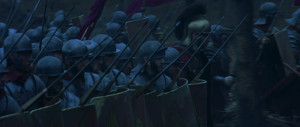

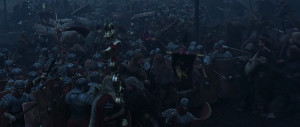


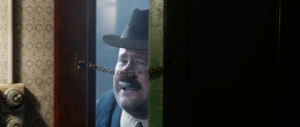

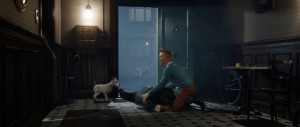


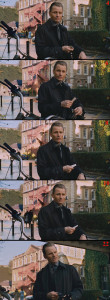
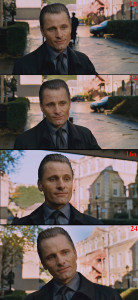

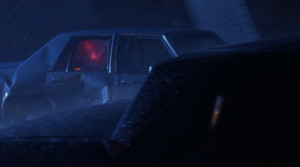

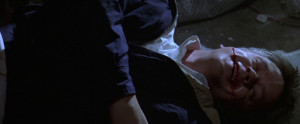



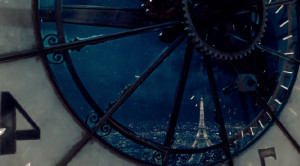






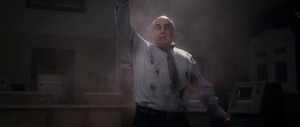
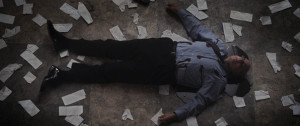













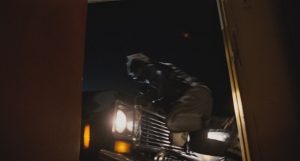















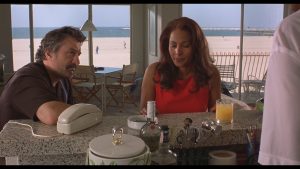








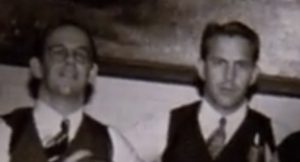



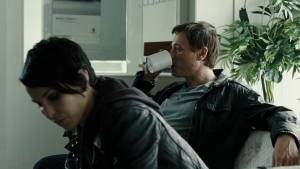
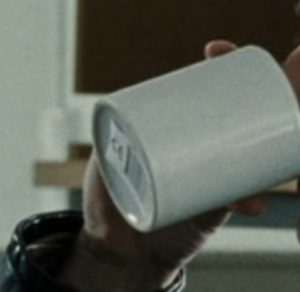
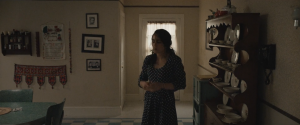

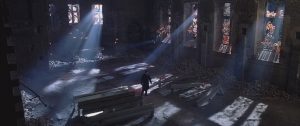

about 7 years ago
A plislengay rational answer. Good to hear from you.